PRAIA MANSA - Continuation
![]()
| The new project had
the following phases: 1. The construction of a 660 meter long wall in gabions (adherent revetment) with the purpose of protection and energy dissipation and also to help with the deposit of sand. |
| 2. The construction of two small groins in
gabions, 200 meters from the rubble mound groin and 50
meters from each other. 3. The construction of a 200 meter artificial beach between the small groin and the rubble mound groin, using land deposits totalling 23,000 m³ of sand, as a test. |
 |
| 4. Repairs in the rubble mound groin that had
been damaged by storms. 5. The execution of the pluvial water draining project, repair of the streets and landscaping along the wall. |
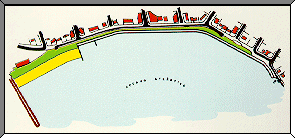 |
| The project, having been re-negociated with the contractor, started in August 1979 and was completed in April of 1980. The total cost was US$500,000, and the following material was used: |
| - Reinforcement of rubble mound groin................................. | 1,000 m³ |
| - Gabions .................................................................................. | 4,420 m³ |
| - Slope regularization................................................................ | 2,310 m³ |
| - Geotextil (bidim)..................................................................... | 6,700 m² |
| - Paving (petit-pave)................................................................. | 1,600 m² |
| - Street paving (blockret)......................................................... | 2,900 m² |
| - Pluvial water draining............................................................ | 1,400 m |
| - Sand........................................................................................ | 23,000 m³ |
| Relative
to the proposed cost of the initial project of artificial
nourishment, the gabion project represented a reduction
in cost of US$900,000. Furthermore, we must also consider
that in the artificial nourishment project proposal,
there was no guarantee that the sandfill would remain. In fact, the 23,000 m³ of sand placed near the groin were removed by the sea in less than 6 months. |
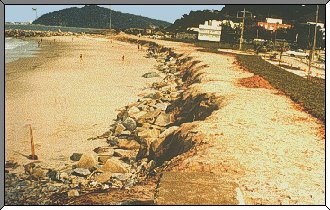 |
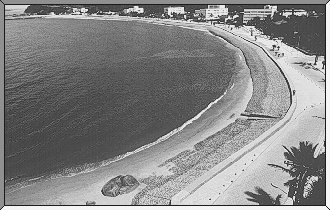 |
After a short time of observation, it was noticed that a sand deposit had developed in the middle of the beach and between the gabion groins. This deposit was so fast that we decided to build 7 more gabions groins, each being 10 meters in length, in the middle of the beach, as well as a gabion wall next the rubble mound groin. |
 |
This
additional job was completed in December, 1980, with a
cost of US$58,000. The photo to the left shows the appearance of the shoreline in March 1981. The gabion's efficacy as an energy dissipator (adherent revetment function), combined with the sand trapping action given by the small groins, was confirmed by a rapid deposit of sand. |
The following pictures were taken in July and November 1981, respectivelly:
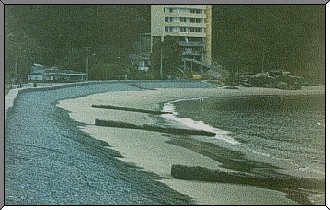 |
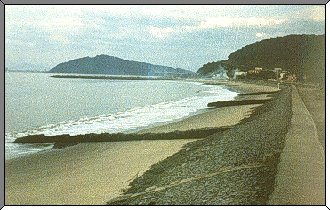 |
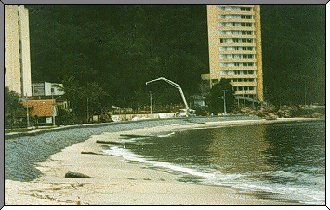 |
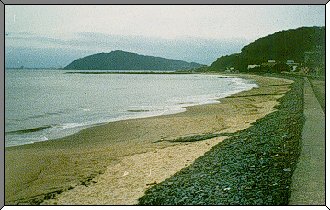 |
| Considering the encouraging results, we decided to build 4 more gabion groins over every other one of the original seven. These four new groins were 35 meters in length. We also built 2 additional 30 meter long groins near the rubble mound groin where sand losses were still occurring. |
In March 1982, the situation was as follows:
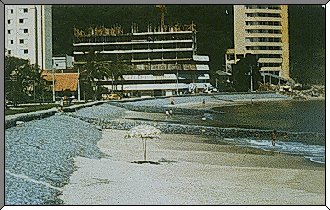 |
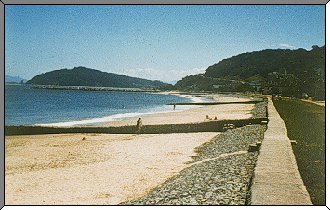 |
| By the end of 1987,
I serviced the evolution of the beach with another
engineer, Mr. Mario Forcadell, doing gabion maintenance
and increasing the length of the groins only
when and where necessary. My theory is to work WITH the
sea, and not AGAINST it... In 1988, with the change in government, our services in the project were discontinued. Since then, there has been no maintenance or conservation service. On the contrary, the beach cleaning crews of the Municipal Government of Matinhos have indeed done beach cleaning jobs that included the removal of plants growing on the gabions, plants which help to secure the rocks. Occasionally, the erroroneously removed plants have been burned over the mesh, thus destroying the plastic protection. |
Even so, in October, 1996 and August, 1999, the beach situation was as follows:
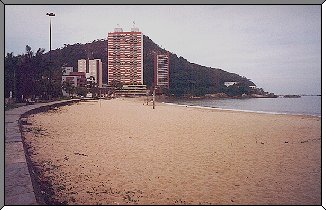 |
|
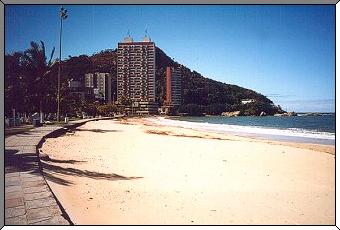 |
 |
In February, 2004:
|
|
|
Others works were and are indispensable to provide more stabilization to the beach.
But...
| Go to
Praia Brava |
![]()
| Go to:
Return to: |